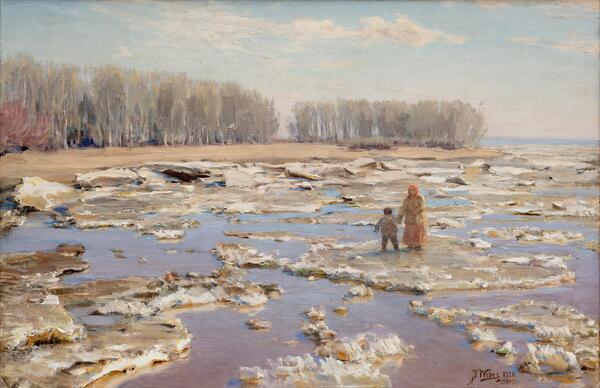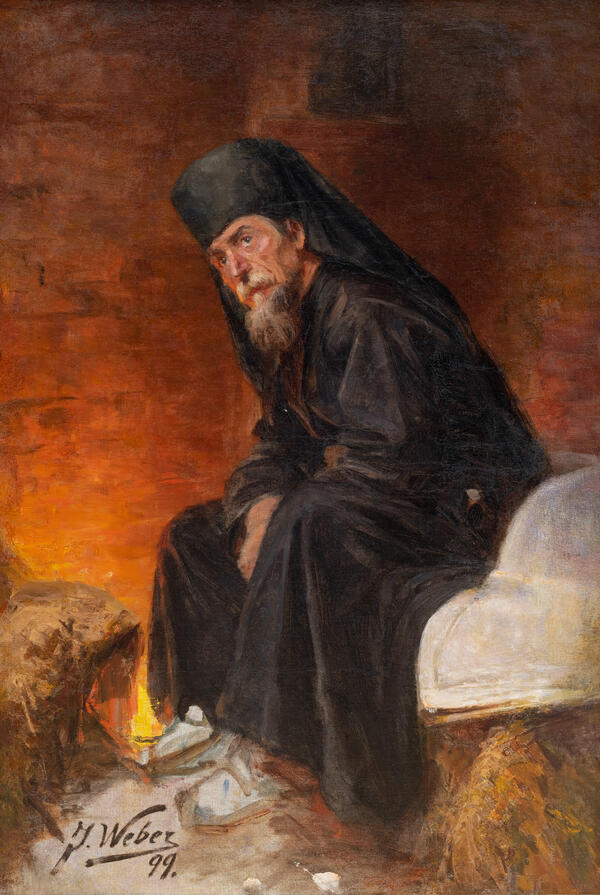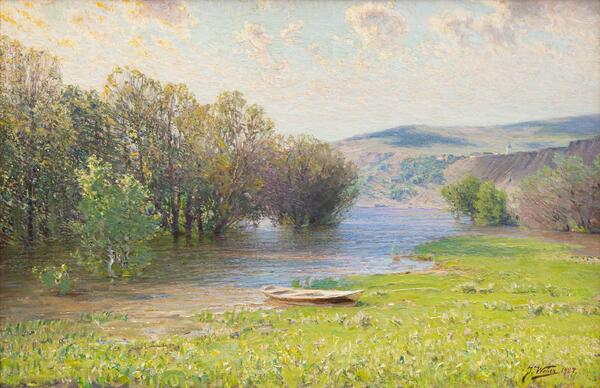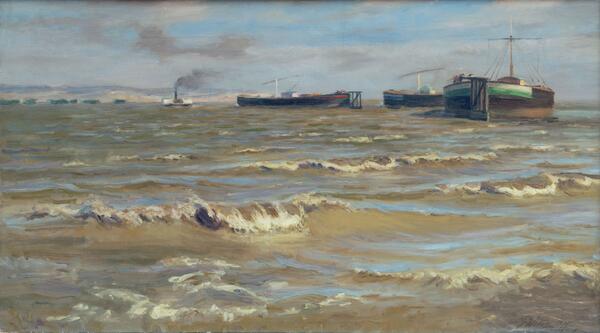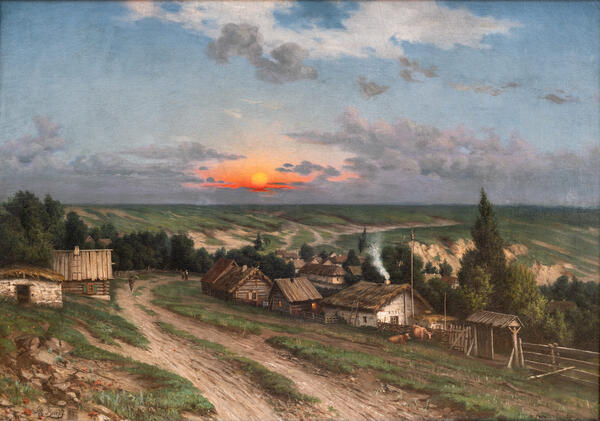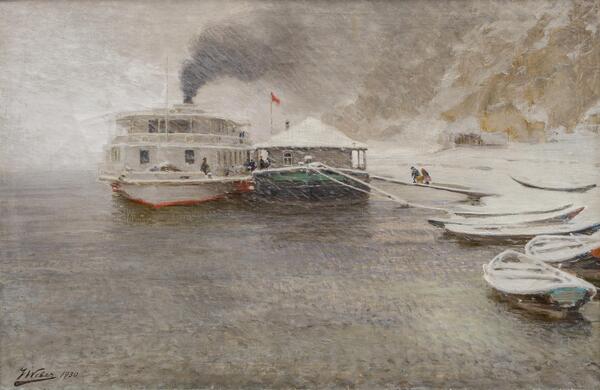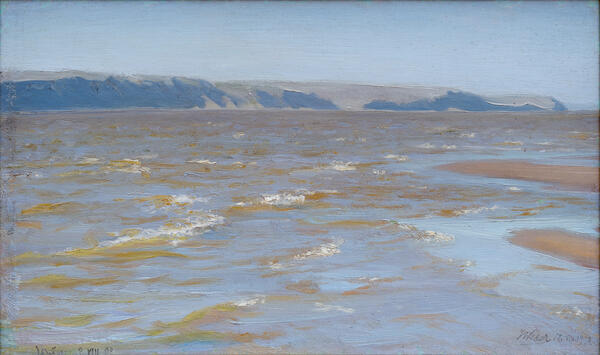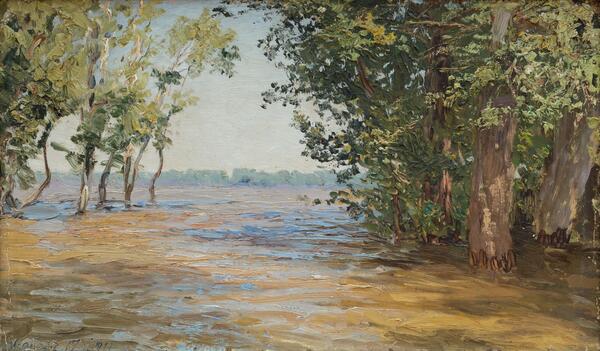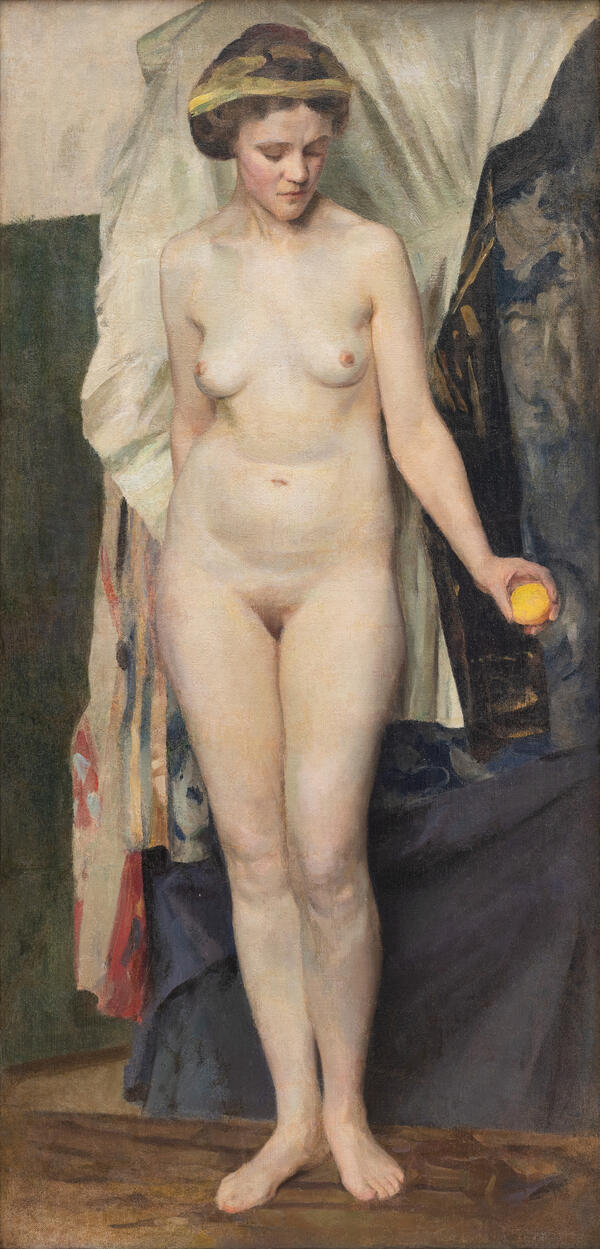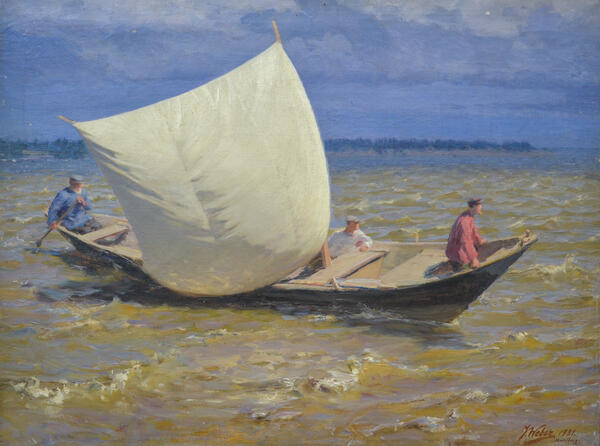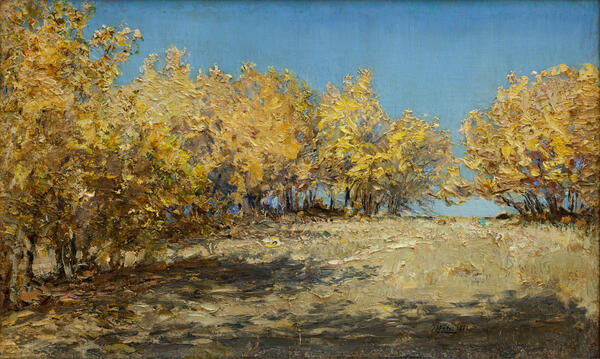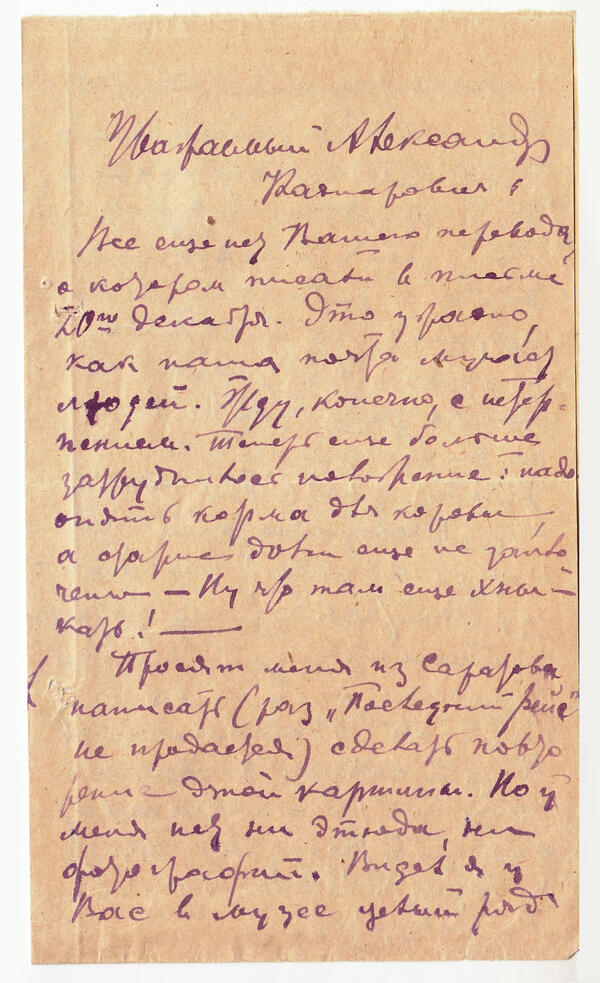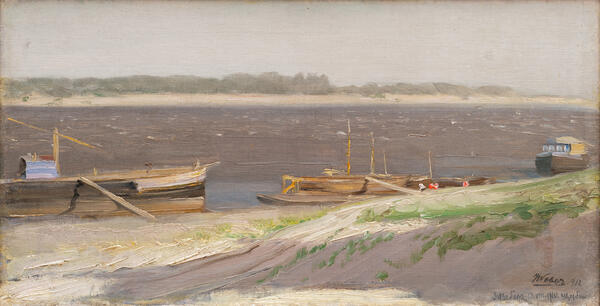The collection of the Engels Museum of Local Lore includes the painting “Evening Mail” by the artist Yakov Yakovlevich Weber. It is characteristic of the artist’s work in the 1930s, when he created mainly genre paintings. Nevertheless, his focus in this period was still placed on the landscape rather than on the genre scene.
The fact that in the 1920s and 1930s, Weber painted a few genre paintings indicates that this kind of visual art had a great propaganda potential and the artist was still “dependent on the orders of his time” to a certain extent. A number of large paintings were created by Weber in Shcherbakovka (a settlement on the right bank of the Volga River closer to the Volgograd region) with its amazing landscapes and the Volga with steep banks. As it would seem, the artist depicted just an ordinary event — the delivery of mail to the workers. In the foreground, the workers standing on the shore are reading and discussing the latest newspapers they have just received. However, it is not this scene, but the Volga evening landscape, which is the main message. Obviously, the genuine landscape painter was attracted by the view of powerful, weathered limestone rocks overhanging the river bank and illuminated by the gold of the setting sun. The genre scene serves only as an opportunity to balance the much-loved landscape motif.
Yakov Weber was the artist who for many years led
the realistic art movement of young artists of the Autonomous Soviet Socialist
Republic of the Volga Germans. According to the memories of the Engels artists
Yevgeny Zhuravlev, Pavel Zorya, Nikolay Kukhovarenko, ans Pyotr Ityaksov, who
sometimes traveled to Shcherbakovka to make sketches, Yakov Weber was terse,
patient and attentive to each student. The artist paid great attention to
drawing and believed that no good painting could be done without the skill of
drawing. In 1934 and 1936, Weber was among the 50 participants at the regional
art exhibitions, which were held in the building of the Radishchev Museum in
Saratov. His work was represented mainly by his landscapes.



